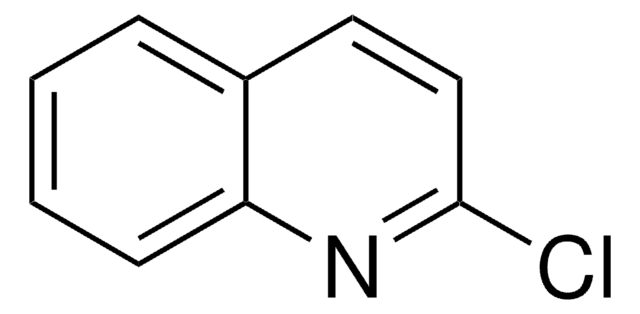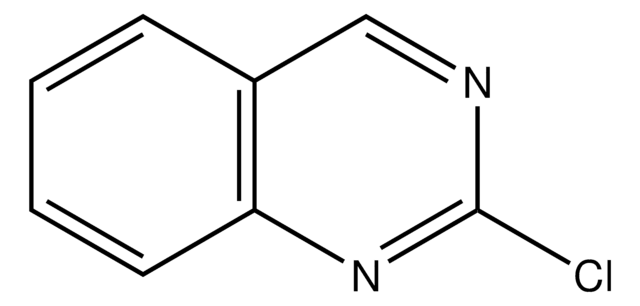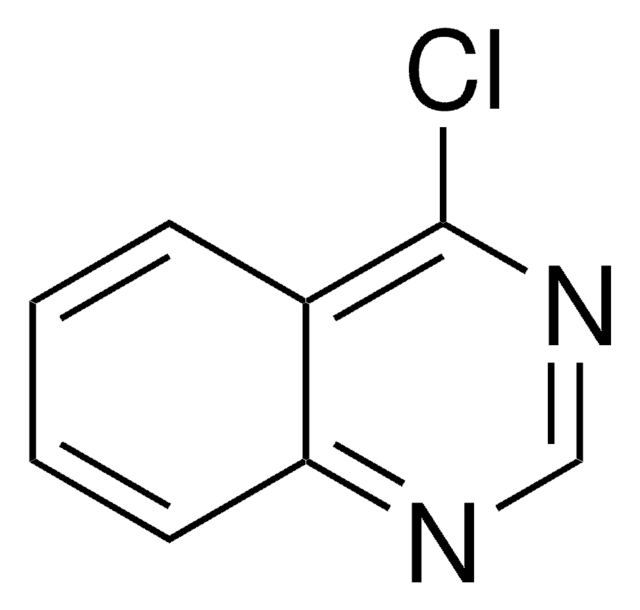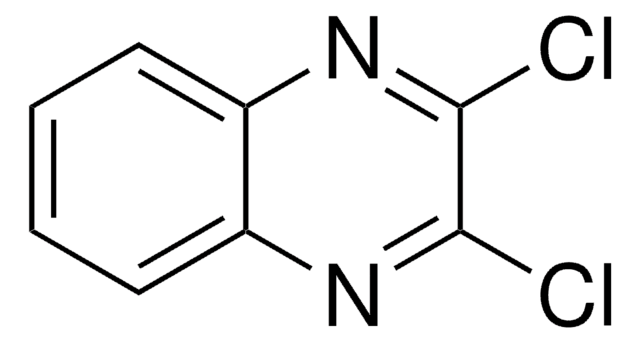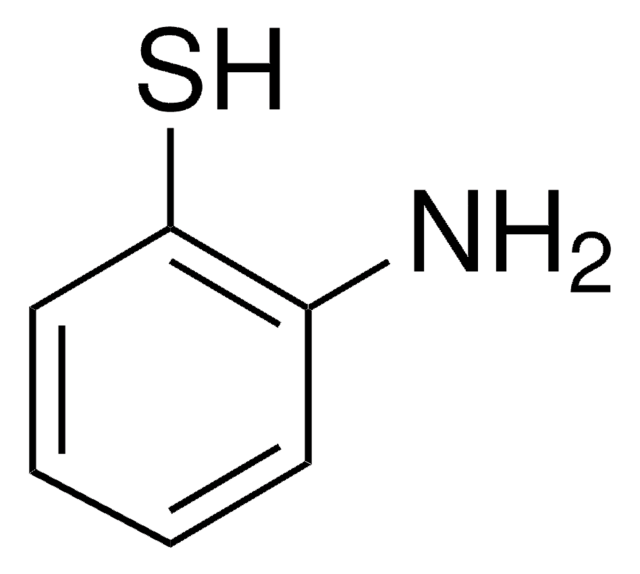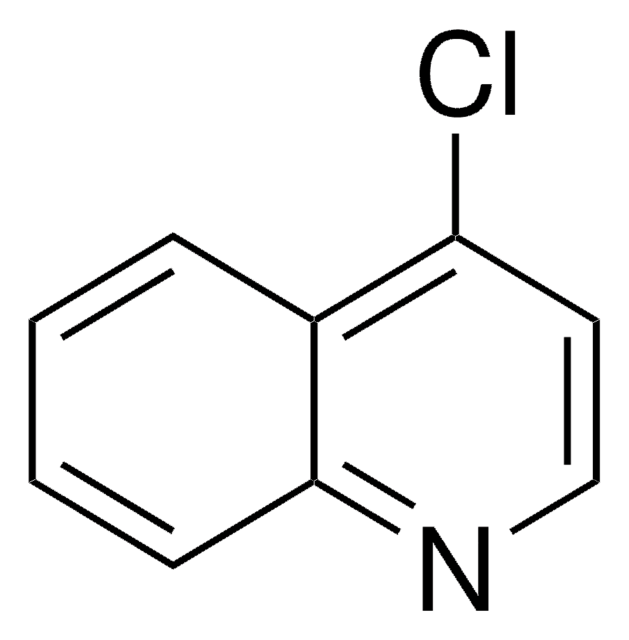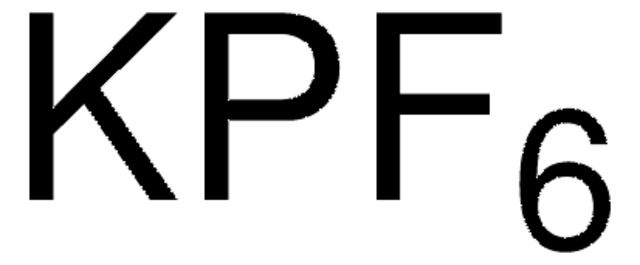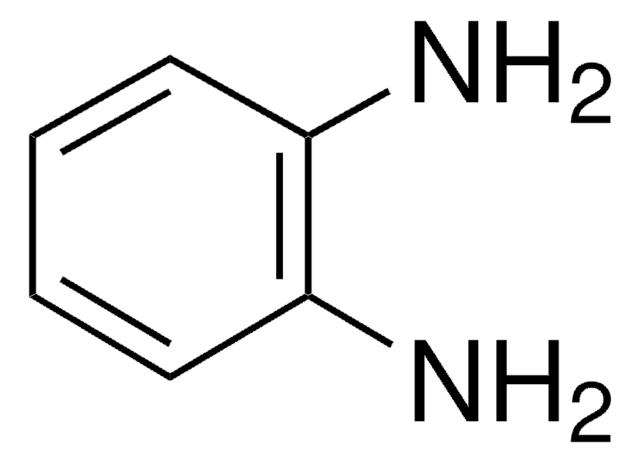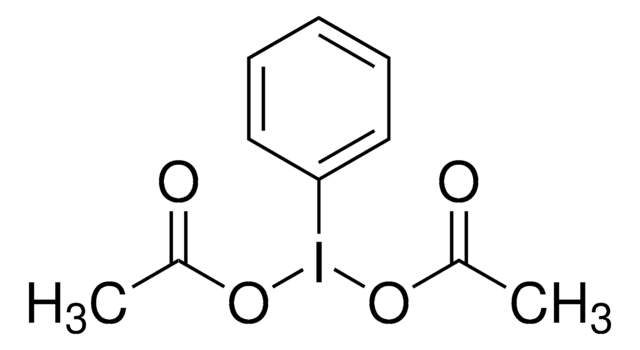All Photos(3)
About This Item
Empirical Formula (Hill Notation):
C8H5ClN2
CAS Number:
Molecular Weight:
164.59
EC Number:
MDL number:
UNSPSC Code:
12352100
PubChem Substance ID:
NACRES:
NA.22
Recommended Products
Quality Level
Assay
98%
bp
100 °C/1.4 mmHg (lit.)
mp
47-50 °C (lit.)
functional group
chloro
SMILES string
Clc1cnc2ccccc2n1
InChI
1S/C8H5ClN2/c9-8-5-10-6-3-1-2-4-7(6)11-8/h1-5H
InChI key
BYHVGQHIAFURIL-UHFFFAOYSA-N
Application
2-Chloroquinoxaline (QCI) was used to study the effect of solvent on hydrolysis of QCI in aqueous–organic solvent mixtures with acetonitrile and dimethylesulphoxide. It was used in the synthesis of 2-(3-butynyl-2-methyl-2-ol) quinoxaline.It was used as reagent in the synthesis of chloroquinoxaline sulfamide.
Signal Word
Warning
Hazard Statements
Precautionary Statements
Hazard Classifications
Acute Tox. 4 Oral - Eye Irrit. 2 - Skin Irrit. 2 - STOT SE 3
Target Organs
Respiratory system
Storage Class Code
11 - Combustible Solids
WGK
WGK 3
Flash Point(F)
Not applicable
Flash Point(C)
Not applicable
Personal Protective Equipment
dust mask type N95 (US), Eyeshields, Gloves
Choose from one of the most recent versions:
Already Own This Product?
Find documentation for the products that you have recently purchased in the Document Library.
Kelly G Matz et al.
Inorganic chemistry, 50(20), 9804-9815 (2011-09-08)
A model system for the molybdenum cofactor has been developed that illustrates the noninnocent behavior of an N-heterocycle appended to a dithiolene chelate on molybdenum. The pyranopterin of the molybdenum cofactor is modeled by a quinoxalyldithiolene ligand (S(2)BMOQO) formed from
Kinetics of the Reaction of 2-Chloro-quinoxaline with Hydroxide Ion in ACN-H2O and DMSO-H2O Binary Solvent Mixtures.
Fathalla MF.
Journal of Solution Chemistry, 40(7), 1258-1270 (2011)
Our team of scientists has experience in all areas of research including Life Science, Material Science, Chemical Synthesis, Chromatography, Analytical and many others.
Contact Technical Service